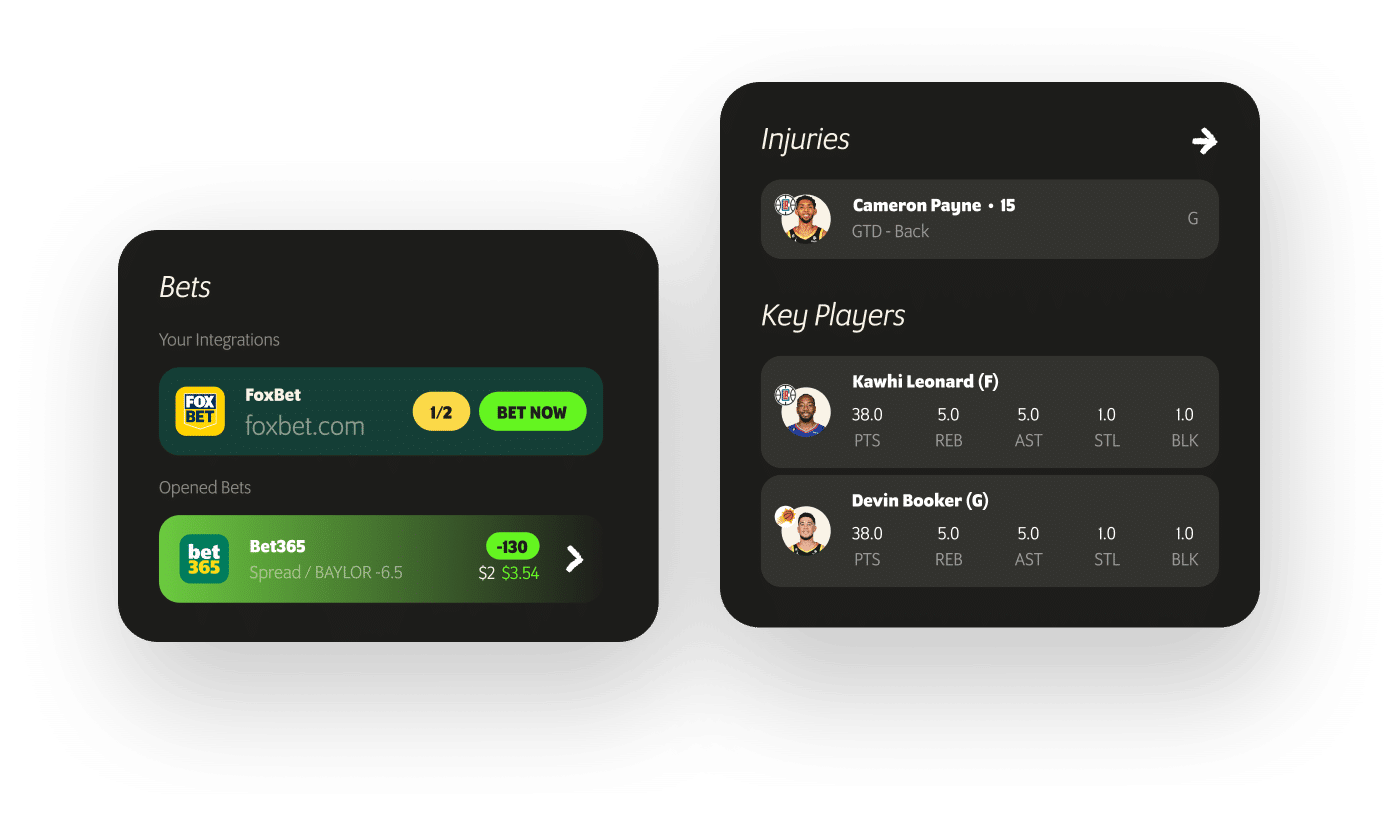Sports betting has rapidly gained popularity as a thrilling way for fans to heighten the excitement of their favorite games. Yet, if you’re just stepping into this world, grasping the concept of odds might seem like tackling a whole new language.
But what do these numbers actually mean, and how can you use them to make better betting choices? Here’s a simple, beginner-friendly guide to help you understand and read betting odds, so you’ll feel confident placing your first bet.
What Are Betting Odds?
At their core, betting odds show two things: the probability of an event happening and the potential payout if you’re correct. Odds set by sportsbooks indicate how much you could win based on the amount you bet. Understanding odds is essential for new bettors, as it can guide you on which bets offer the best potential return and help you gauge the risk involved.
Betting odds vary based on how likely a sportsbook thinks an outcome is. For instance, a favorite (or more likely) team will have lower odds because the payout is smaller, whereas an underdog (or less likely) team will have higher odds with a larger potential payout.
Types of Betting Odds
The three main types of betting odds are Moneyline (or American), Fractional, and Decimal. While each format has its own look, they all convey the same information—just presented differently.
Moneyline Odds (American Odds)
In the United States, Moneyline odds, or American odds, are the standard. They appear as either a positive or negative number:
- Positive Odds (+): When you see a positive number, like +200, it indicates an underdog. If you bet $100 and win, you’d earn $200 in profit, plus your original $100.
- Negative Odds (-): A negative number, like -150, represents the favorite. This means you’d have to bet $150 to earn a $100 profit. The larger the negative number, the more favored the team or player is to win.
Example: Let’s say Team A has odds of -150, while Team B is listed at +200. This means Team A is favored, and you’d have to bet more on them to get a smaller payout. Betting on Team B would give you a bigger payout if they win, but it’s also riskier.
Fractional Odds
Fractional odds, like 5/1 or 2/5, are traditionally used in the UK and are especially common in horse racing.
- For odds of 5/1: For every $1 you bet, you’d earn $5 in profit if you win.
- For odds of 2/5: You’d need to bet $5 to earn $2 in profit.
Example: If you bet $20 on odds of 5/1, you’d earn $100 in profit (5 x $20), plus your original $20 back, for a total of $120.
Decimal Odds
Decimal odds are most common in Europe, Australia, and Canada and are perhaps the easiest to understand for new bettors. The decimal shows the total payout you’ll receive if you win (your stake multiplied by the odds).
- Example:With odds of 2.50, a $100 bet would return $250 in total ($100 x 2.50).This includes both your winnings ($150) and your original stake ($100).
Key Takeaway: While Moneyline odds are common in the U.S., it’s useful to be familiar with all three formats. Most sportsbooks allow you to switch between formats, so choose the one that makes the most sense to you.
 How to Calculate Payouts Using Different Odds
How to Calculate Payouts Using Different Odds
Knowing how to calculate payouts is crucial for comparing bets and understanding what you stand to win. Here’s how to calculate your payout for each format:
- Moneyline Payouts: For positive odds (+200), multiply your bet by the odds divided by 100 (e.g., $100 x (200/100) = $200). For negative odds (-150), divide 100 by the odds, then multiply by your stake (e.g., $100 / (150/100) = $66.67).
- Fractional Payouts: Multiply your stake by the first number in the fraction. For 5/1, if you bet $20, your payout would be $100 (5 x $20).
- Decimal Payouts: Multiply your stake by the decimal. For 1.75 odds, a $50 bet would return $87.50 ($50 x 1.75).
Key Takeaway: Quick calculations can help you see if a bet offers a worthwhile return based on the risk.
How Betting Odds Reflect Probability
Betting odds don’t just indicate payouts—they also hint at how likely the sportsbook thinks an outcome is. The link between odds and probability gives bettors a clearer sense of the risk involved. Higher odds indeed indicate a lower probability of the event happening, such as an underdog team winning a championship. However, this also means that if you do place a bet on the underdog and they win, the potential payout will be significantly higher than if you had bet on the favorite. It’s a classic risk-reward scenario in the world of sports betting. Conversely, lower odds suggest a higher likelihood (such as the favorite winning), though the payout will be smaller.
Converting Odds to Implied Probability
To convert odds into implied probability, you can use these formulas:
- Moneyline Odds: For positive odds, probability = 100 / (odds + 100). For negative odds, probability = odds / (odds + 100).
- Decimal Odds: Probability = 1 / decimal odds.
Example: If the odds are -150, the implied probability is 150 / (150 + 100) = 60%. This means the sportsbook believes there’s a 60% chance the favorite will win.
Key Takeaway: Understanding implied probability can help you gauge risk and make more strategic bets.
Reading and Comparing Betting Odds in Action
Let’s see how odds work in real-life betting situations.
- Example: Football Match: Say you’re looking at a game where Team A has -110 odds, and Team B has +130. Team A is favored, but not by much, since both teams are close in ability.
- Live Betting: Odds shift in real-time during a game based on the score, injuries, or momentum. Live betting lets you ride the wave of shifting odds, but it requires lightning-fast reflexes and a keen eye for those in-game momentum swings.
- Parlay Bets: In a parlay, multiple bets are combined for a larger payout. Each leg in the parlay has odds, and the total odds reflect all the combined probabilities. Parlays are higher-risk but offer higher rewards.
Key Takeaway: The more familiar you become with odds in action, the better you’ll be at spotting valuable bets and maximizing your payout potential.
Common Mistakes New Bettors Make with Odds
Learning to read betting odds takes practice, and many new bettors make mistakes along the way. Here are a few pitfalls to avoid:
- Misreading Odds Format: Switching between odds formats can be confusing. Make sure you know which format you’re working with so you don’t misinterpret the odds.
- Overlooking Odds Changes: Odds often shift before a game due to news or changing betting patterns. Watch these fluctuations closely to make sure you’re betting with the best possible value.
- Not Comparing Odds Across Sportsbooks: Different sportsbooks offer different odds. Always compare odds to make sure you’re getting the most profitable bet.
Key Takeaway: Small adjustments and awareness of odds fluctuations can help you make more strategic bets and avoid costly beginner mistakes.
Use Odds to Your Advantage
Understanding betting odds is one of the most valuable skills a new bettor can develop. Whether you’re betting on your favorite team or trying out live betting, knowing how to read and interpret odds will give you more confidence and control over your bets.
 Betting Made Simple and Fun
Betting Made Simple and Fun
Golden Camel brings all your bets together in one app, with live updates and easy tracking to keep things organized. It’s built to take the hassle out of betting, so you can enjoy the game without distraction. Experience the ease of betting with Golden Camel! Grab the free Golden Camel app. It’s your go-to for staying on top of prop bets and parlays without bouncing between different apps or sites. Track your wagers with pinpoint accuracy and manage every leg like a pro. Consider it your ultimate sidekick for sports betting—keeping you sharp and in control while following all your favorite sportsbooks.





